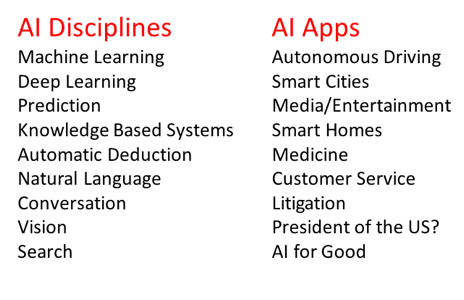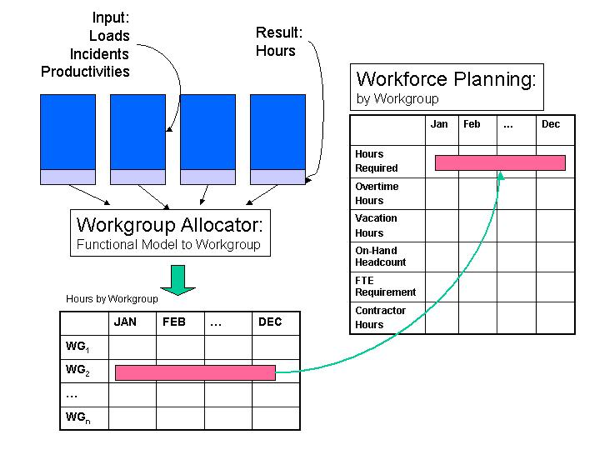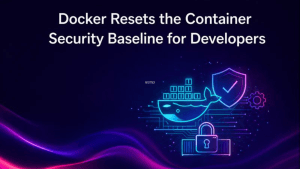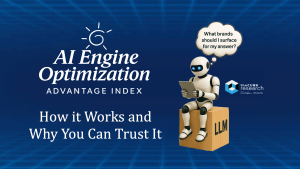Premise: AI technology is far beyond the hype phase, but adoption of AI in organizations in the short term primarily will be through third-party software. There are, however, excellent opportunities for organizations to retrofit AI functions into their own applications to boost speed, accuracy and productivity. Caution: AI cuts to the core of human contribution and will need constant leadership to prevent disorganization, distortion and dysfunction. It is just as likely that human experts in select fields will be co-opted by AI as those performing manual processes.
Artificial intelligence (AI) is an old technology, with new implementations. However, the advent of increasingly parallel programming models and unprecedentedly scalable hardware, coupled with the opportunity to pursue significant new business value by using these technologies to powerfully mine volumes of customer and other data, have made AI vogue. As executives consider adding AI to their business system portfolio over the next 24 months, they must understand the following:
- Not everything called AI is real. Psychologists and neuroscientists are still trying to understand what human intelligence is, so “intelligence” in the context of “artificial” and “human” is the same word to describe two different things, like Paris, France and Paris, Texas. Distinguishing between core AI disciplines and technologies and AI applications that are built from those technologies is important to keep track of AI investments and expected business outcomes (see Figure 1).
- In 2017, AI can stand for “additive intelligence.” Organizations will find that their existing applications can be enhanced with the application of AI “wrappers,” particularly replacing manual data ingestion, human expert forecasting and data discovery. It is becoming easier for in-house developers to use AI technology, especially since Amazon AWS, IBM Watson and Microsoft Azure, among others, provide useful API’s to AI algorithms. However, enterprise software providers have far more resources to implement AI capabilities and most AI will be added to business systems through software packages.
- AI can lead to organizational distortion and dysfunction. AI implementation has a direct effect on the nature of work in organizations. Adjusting to this is never simple. Employees see AI coming and they will push back, either purposely or not.

Figure 1. AI Disciplines and AI Applications Are Not the Same
Key AI Adoption Issues During 2017-2018
Key Issue 1: Building, Buying Greenfield AI apps
No one will “implement” AI, but the organizations that successfully deploy AI will treat it as the software/data combination that it is, which will make it less mysterious – and threatening. Software tools like Theano and TensorFlow, cloud data centers for model training, inexpensive GPUs for deployment, and API-based AI services in the cloud, are allowing small teams of engineers to build state-of-the-art AI systems.
In the short term, in-house AI development will focus on enacting simpler customer engagement activities in services, marketing, and sales. By 2018, most enterprise software vendors will have added AI capabilities to their flagship products, including chatbots to CRM, IoT Edge Analytics to ERP, and other more complex domains.
Over the next few years, AI will show up in a greater range of consumer applications, which will significantly increase expectations on corporate investments in AI. Why? Just as the ease-of-use of consumer web applications drove change in internally and externally facing enterprise applications, so will autonomous vehicles, robot appliances, and other AI-infused devices drive expectations in the enterprise.
Key Issue 2: Retrofitting AI into Existing Apps
Information technology can be used to both cut costs and increase revenue. Because inefficiencies always emerge as missions, environments, and people evolve, cost-cutting – such as optimizing workforce needs – will always be a useful effort in organizations. However, the real AI battlefield is differentiation: distancing your enterprise from your competitors. The key to leaping ahead isn’t wholesale replacement, but applying new technology to existing systems whenever possible. Speed is essential. Organizations need to be constantly on the lookout for new ways to rapidly retrofit existing systems to streamline and enhance revenue opportunities.
To illustrate the idea of retrofitting, consider a workforce planning application to forecast and track labor cost for a utility company with outdoor transmission facilities. Utilities must balance the need for maintenance and repair with labor, especially overtime and contractor headcount. To begin, experts forecast the incidents based on the loads (miles of wire, for example), the types of incidents and the time to clear the problem. This results in a forecast of hours. Hours are then broken down into required workgroups and each workgroup forecast is transposed into a series of models that factor rates, overtime, headcount, union contracts, and more.
This planning cycle happens annually, and actual results are fed monthly (two weeks late), a sort of ritual, annual rain dance, out of date even before finalized.
Streaming sensors with machine learning algorithms could easily be attached to the top of the application to replace human “forecast” and guess work by analyzing actual incidents and productivities and even possibly accessing weather information which plays are a large roll in incidents and response times.
Since the workforce planning module is essentially an optimization problem worked out by analysts through many iterations, AI can dramatically accelerate the data flow process, improve accuracy, and operate in real-time.

Figure 2. Schematic of a Workload Planning Application
Key Issue 3: Implementation of AI Will Cause Distortion and Dysfunction
People in organizations are not singular actors. They have relationships, are part of groups and have mentors and followers. When one is disrupted by a new technology they aren’t easily removed like knight takes bishop. It can affect all those relationships. This isn’t a new phenomenon. All previous major shifts in technology that affect the nature of work have been impeded by resistance and dysfunction, and AI is likely to be the most stunning shift of all.
When information from analytic work is communicated to others, the results are often difficult to explain. Context, explanation, or explicit models must be included to describe the rationale behind the results. This includes detail about methodology, narratives about the steps involved, alternatives that were considered and rejected (or perhaps just not recommended) and a host of other background material. However, communicating meta-information usually requires its own complex process. Typically, meta-information is conveyed in a sequence of time-consuming, serial meetings which must be scheduled days or weeks in advance. The combination of information communication activities turns cycle time into cycle epochs. Knowledge mismatch between various actors is the reason for posterior explanation. Well-researched and reasonable conclusions do not translate into action because management is unwilling to buy in due to their lack of insight into the process by which the conclusions were arrived.
AI-driven decisions cannot come from a black box. In previous versions of AI, this was factor in its decline. Unless the AI tools themselves contain the mechanisms to explain how conclusions are drawn, progress will be slow. The solution to this problem is an environment where complex decisions that must be made with confidence and consensus can gather recommendations to be presented unambiguously and compellingly across multiple actors in the decision-making process, with the assistance of the AI models.
Action Item: AI cannot be inserted into an organization in a vacuum. Before starting, you will need to assess your existing capabilities. The late architect Eero Saarinen advised that when designing something, always consider it in its next larger context: a chair in room, a room in building. AI algorithms need lots of data to produce valid and useful conclusions. AI also implies real-time. Make sure you have the infrastructure to provide good data in sufficient volume and speed for AI to operate. In the search for opportunities for AI, consider augmenting the capabilities of people, allowing them to be more productive. This is especially true in wrangling data for analytics, a subject ripe for AI because business analysts and data scientists alike spend too much time finding and prepping data, limiting the time they have for creative analysis.


